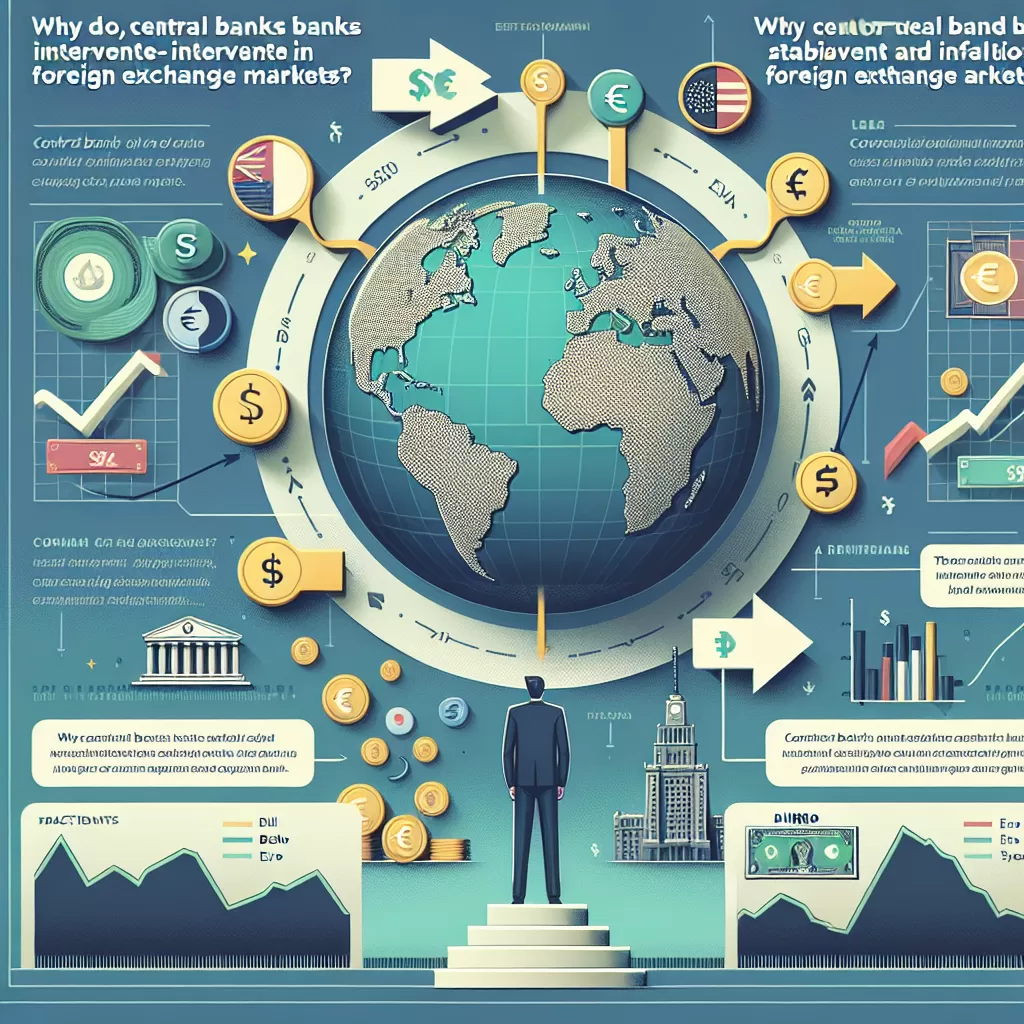Why Do Central Banks Intervene In The Foreign Exchange Markets
Follow Currency Mart April 10, 2024
Where to purchase Foreign Currencies?

Introduction
I am the Guardian of foreign exchange, tasked with monitoring the dance of numbers and the fluctuation of values as they transition across global borders. The dynamics of foreign exchange markets and the interventions of central banks are broad subjects that require a detailed understanding. In this article, we discuss why central banks intervene in foreign exchange markets on the immense, globally-linked stage of international finance.The Role of Central Banks
Central banks are primarily responsible for monetary policy within their respective countries. This includes managing interest rates, ensuring financial stability, controlling inflation rates, and maintaining employment levels. However, central banks also play an integral role in the foreign exchange marketplace. They often intervene to stabilize their nation's currency, aiming to produce desirable economic outcomes, facilitate international trade, and improve overall financial stability.Exchange Rate Stability
One critical reason central banks intervene in the foreign exchange market is to maintain exchange rate stability. Extreme volatility in exchange rates can cause uncertainty for businesses and individuals engaging in international trade and investment. Through their interventions, central banks aim to reduce this volatility, attaining a level of stability necessary for a confident, functioning economy.Influence on Inflation and Economic Balances
Changes in exchange rates can significantly impact a country's inflation rate. A rise in the value of a nation's currency means imported goods become cheaper, which can reduce the inflation rate. Conversely, a drop in the value of the currency can result in imported goods being more expensive, leading to higher inflation. By intervening in the foreign exchange market, central banks work towards keeping inflation within the target range.Intervention Methods
There are several ways in which central banks can intervene in the foreign exchange market. These methods include direct intervention, sterilized intervention, and indirect intervention. Direct intervention involves buying or selling the currency on the open market. Sterilized intervention involves offsetting purchases or sales of foreign currency with domestic assets to neutralize the impact on the domestic money supply. Indirect intervention involves altering the domestic interest rate to influence the exchange rate.Impact of Central Bank Intervention
Undeniably, central bank intervention can significantly impact foreign exchange rates. Such actions can lead to a strengthening or weakening of a currency against others, influencing the cost of imports, exports, and foreign debt. However, it's important to know that these interventions can produce both beneficial and adverse effects, and therefore, must be carefully managed.Conclusion
Central banks hold an essential role in their respective economies and on the global stage. Their interventions in the foreign exchange markets aim to provide stability, manage inflation, and maintain economic balance. Although foreign exchange markets are notoriously difficult to predict and control, central banks' actions can significantly sway these markets, creating a profound impact on national and international economics. Each central bank's challenge is to balance these powers with the ongoing task of ensuring their interventions lead to positive outcomes for their respective economies. As the guardian of foreign exchange, my role is to ensure this dance continues with grace and efficiency, minimizing the discomfort of such fluctuations for businesses and individuals alike.
Where to purchase Foreign Currencies?